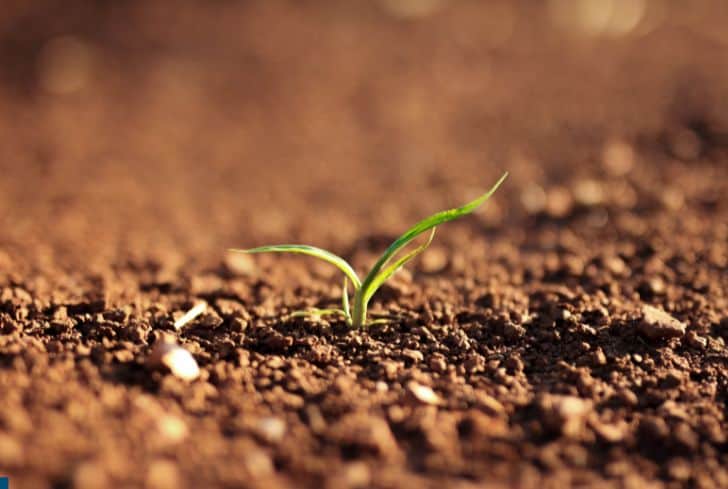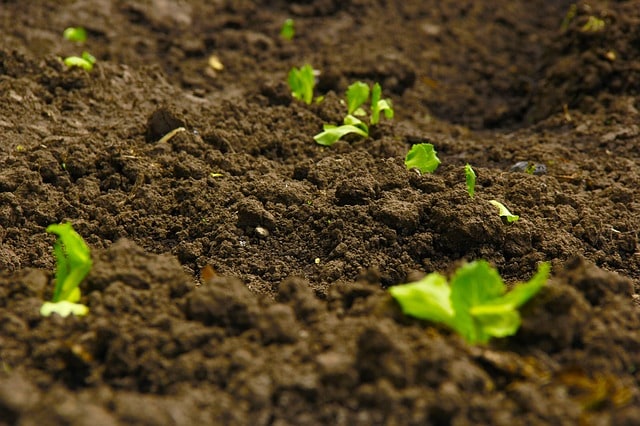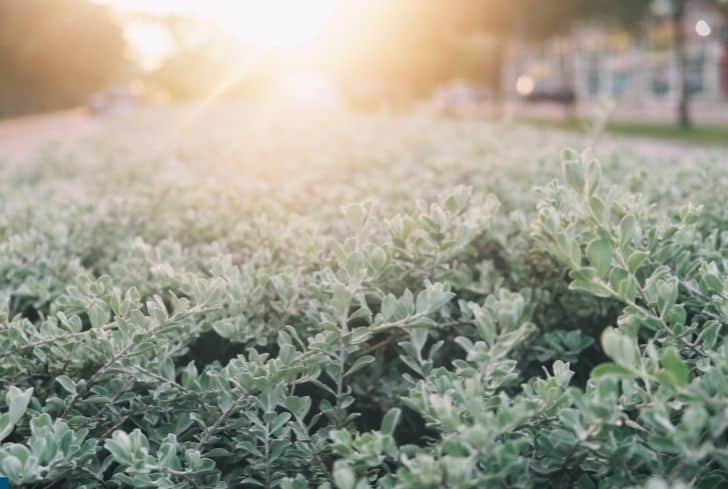Does the Soil Need Sunlight? (Why or Why Not?)

Soil is the support system for life that plays a vital role in the Earth’s ecosystem. Soil is necessary for agriculture, environment, nature, landscape architecture and urban applications. In addition, it is the source of raw materials, food, and the biological habitat of various microorganisms, earthworms, termites, and other microscopic animals that fix nitrogen and decompose organic matter.
Soil is the platform for man-made structures like buildings and highways. Without soil, plants cannot grow, which regulates weather. Soil prevents flooding by regulating the flow of rainwater; it stores large amounts of organic carbon and is a buffer against pollutants that maintains groundwater quality. Soil is also the foundation of every physical and cultural heritage. We build on soil with soil and in soil.
In this article, we will discover some great information about soil and its relation with other natural elements like Sun, Air(oxygen) and how it becomes fertile?
Does the Soil Need Sunlight to be Healthy?
In general, the soil does not need direct sunlight to be healthy. Though Sunlight is indirectly required by the organisms living in the soil, such as Cyanobacteria, Algae, etc., the fertility of the soil actually depends on the climate, quality of the air, fertilizers used, water and organic matter.
Sunlight is the most abundant renewable energy resource on Earth. All types of soil more or less absorb and reflect sunlight. Wet soil absorbs the most sunlight and gains the most heat.
On the other hand, dark soil absorbs around 86% of sunlight, gray soil absorbs 80%, and light soil absorbs only 20% of sunlight, respectively. The rest is reflected in the atmosphere. This sunlight makes the soil fertile for plant growth. The intensity of light influences the manufacture of plant food, stem length, leaf color and flowering of the plant that grows in soil.
Organisms living in the soil, such as Cyanobacteria, Algae, etc produce carbohydrates for the soil to help it become healthy and provide essential nutrients to plants to grow and make healthy food for humans with all the necessary nutrients.
The impacts of healthy soil are reflected in most of the Sustainable Development Goals containing economic, social and environmental aspects.
How Does Sunlight Affect the Soil?
Sunlight, though, does not affect the soil directly; it affects the microorganisms above or below the surface like Cyanobacteria and Algae. These organisms synthesize essential nutrients such as Carbohydrates for the soil.
Sunlight helps plants in photosynthesis and preparing food. More photosynthesis means more benefits for the soil.
The heat which travels from the sun to the Earth is absorbed by the soil, which increases soil temperature. Warm soil is more fertile than soil with low temperatures. Microorganisms are more active in warm environments than in colder ones. In addition, the soil controls solar radiation.
The increase in soil temperature may be either good or bad. For example, the increase in soil temperature can instantly kill the microorganisms inside or increase the number of nutrients in the soil.
On the other hand, too much Sunlight causes excess water to evaporate from the soil, drying out and shrinking soil particles, pulling them away from each other. This can be seen in arid areas with cracks along the soil surface.
Ways to Increase Soil Fertility
Soil fertility depends on the climate, Sunlight, air, water, and organic matter. Here are the ways to increase soil fertility. The three substances, Nitrogen, Phenols and Lignin, that plants contain define their quality as organic fertilizers.
Plant and animal droppings, urine, tree prunings, green manure, farmyard manure, weed residues, and crop residues are used as organic fertilizers. Grazing livestock also plays an essential role in the flow of nutrients to cropland.
1. Add organic matter
There is a diverse range of organic matter to improve soil fertility. Manure is added for nitrogen, a critical component of fertile soil. Livestock manure from cows, goats, and pig is a good option.
However, it is better to collect manure from healthy, free-range animals (not factory-farmed). Manure from unhealthy and confined animals is more likely to have pathogens contaminating your crops.
Even before using manure from healthy animals, wait at least three months before you apply the manure to the garden bed to harvest your vegetables. This will help prevent contamination.
2. Add compost
Compost is another excellent source of nitrogen for your garden. Compost helps to break up clay particles that allow water to drain better. Compost is quite simple to prepare.
It is made of organic materials such as garden clippings, dry leaves, kitchen vegetable scraps and even shredded paper. Once the compost is ready, apply it to your garden bed. This will make the soil more nitrous and produce beautiful, healthy vegetables.
Additionally, sandy loam binds the grains together to reduce moisture, making the soil more fertile.
3. Earthworms
Earthworms are vital among the macro-organisms, as they feed on dead and decaying materials. Growing earthworms as organic wastes are called vermiculture, while processing wastes is called vermicomposting. After digesting, they excrete nutrient-rich dung.
These micro-and macro-organisms help decompose organic matter and the formation of humus, which is essential for healthy soil. They play a crucial role in recycling soil nutrients and making them available to plants.
4. Liming
Soils must be in the optimum pH range to be productive. The optimum pH values/ ranges for high yields differ for different soils and crops. For most crops, a pH range of 5.5 to 6.5 is satisfactory for moderate yields.
Unfortunately, the pH range of 4.5 to 5.0 (acid) can severely damage the plants by causing nutrient deficiencies (e.g., of P, Mg, etc.) and toxicities (of Al. Mn, Fe). To neutralize soil acidity, lime must be applied.
5. Use Kitchen Products
Using Banana peels, egg shells, the water after washing rice, coconut coir or the packaging cushioning in the egg boxes makes excellent mulch acting as an additional soil layer that conserves soil, retains moisture, and reduces weed growth. In addition, pencil shavings make an excellent pest repellent.
6. Mixed cropping
Planting different crops in the same field is a lesser-known way to improve soil fertility, prevent soil erosion and control the spread of soil-borne plant diseases. Doing this with legumes will benefit from adding nitrate to the soil. In addition, deep-rooted vegetables improve soil fertility naturally.
7. Mulch
Mulch is another way to cover the soil that retains water, controls weeds and prevents erosion, thus improving soil fertility. Plant waste can be used as mulch or purchased from a gardening shop. However, avoid using too thick mulch, which may hold too much moisture and cause plant diseases.
When adequately researched and used correctly, the above procedures become great ways to naturally improve soil fertility. Soil fertility is crucial for growing your own vegetables, so it’s worth investing time to learn about these techniques.
Does the Soil Need Oxygen?
Oxygenating or aerating the soil means the addition of oxygen to the soil. It encourages root growth, improves the soil’s oxygen and nutrients flow, and prevents runoff. The pores between soil particles are essential for water flow but also for the movement of gases.
The exchange of oxygen with the atmosphere is critical because plant roots and most soil organisms need oxygen to breathe. Without oxygen, the soil drains poorly, and bare plants with discolored leaves grow. In addition, plant growth can slow and even stop if the plant roots are not receiving enough oxygen.
Does Sunlight Help Weeds to Grow on Soil?
The answer is yes. The Sunlight causes weeds to grow in soil, and weed seedlings can grow exceptionally well when exposed to Sunlight. Simply put, these plants are happiest when exposed to Sunlight. Weed plants require soil rich in organic matter to grow. They need approx. 10 to 13 hours of direct sunlight.
Weed, AKA Marijuana, belongs to the Cannabaceae family, either male or female. Marijuana plants not only require constant sunlight but control different wavelengths of light. Marijuana plants also have chlorophyll to convert light into food energy. Therefore, if you want your Marijuana or Cannabis plant to grow exponentially, you need to put it in sunlight all day till sunset.
Do Microorganisms in Soil Need Sunlight?
Microorganisms like algae and Cyanobacteria require Sunlight for their growth and development in the soil.
Cyanobacteria are one of the oldest forms of life and one of the reasons for oxygen on Earth. The Algae depend on Sunlight for growth. Therefore, water bodies having more exposure to Sunlight tend to have more algae growth than less sun exposure. These microorganisms are photosynthetic and have chlorophyll to convert sunlight into chemical energy. Stripping algae of the Sunlight can result in their death.
Does Sunlight Affect Soil pH?
Soil pH indicates soil acidity or alkalinity. It determines soil health required for healthy plant growth affecting crop yields, availability of nutrients to plants, soil microorganism activity and other vital processes. Light and soil pH are two critical factors in the growth of crops.
In general, increased plant growth was associated with increased light and low pH irrespective of light treatment, and pigment content was higher at low pH. In the low pH/high light treatment combination, maximum growth of stem occurred in plants.
Will Covering Soil Kill Weeds?
The plastic sheets covered soil will kill the weeds leaving you with good garden space. Then, using landscape fabric, you can put it on the bare ground around tree trunks. It blocks the weeds and their growth and allows the water and essential nutrients to pass through them.
Soil can also be covered with rocks and sand to get unique benefits. For example, stones can cover the topsoil in potted plants to prevent water loss, pests, weeds, splashing, and soil loss while watering and when pets interact with the soil.
Using sand as a mulch increases the garden’s aesthetics by contrasting the plant’s greenery with a white background. It not only prevents weed growth but protects the topsoil from losing water, increases soil drainage and aeration and prevents pests like gnats and fungus.






